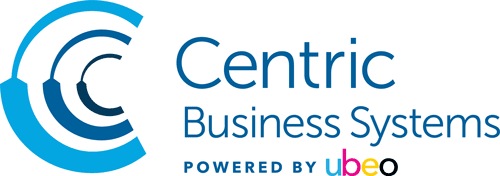Six Keys to Complying with Data Security and Privacy Regulations
For organizations trying to stay up to speed, an ever-increasing list of data security and privacy regulations can seem overwhelming, and complying with these regulations can appear to be an IT nightmare. However, with a little thought and planning, an organization can put compliance efforts into place that can avoid potentially significant penalties, monetary fines, or worse. Here are six key things to remember to ensure an organization can more readily comply with the growing number of data security and privacy regulations.
Lead From the Top
Like all successful initiatives in an organization, data security and privacy regulation compliance efforts must start with company leadership. These efforts should be viewed as strategic initiatives critical to the sustainability of the business. Management, executives, and boards should understand what regulations apply to the firm, what compliance risks may be present within the firm, and what solutions are available to mitigate or remove the risk of non-compliance. Top leadership plays a critical role in cultivating a culture of compliance throughout the organization by ensuring resources are available through the existence of compliance officers or teams, implementing best practices and technology solutions, and using their behavior as a model for compliance performance. When top leadership levels take compliance seriously, the rest of the organization is more likely to follow suit.
Assess Risks, Develop Policies
The first step in assessing compliance risks is understanding what regulations and requirements apply to an organization. Regulations like Sarbanes Oxley (SOX), Gramm-Leach-Bliley (GLBA), and the EU’s General Data Protection Regulation (GDPR) are non-industry specific, while others such as the Family Educational Rights and Privacy Act (FERPA), Health Insurance Portability and Accountability Act (HIPPA), and Health Information Technology for Economic and Clinical Health Act (HITECH), are specific to industries such as education and healthcare. Other regulations, like the California Consumer Privacy Act (CCPA) or the Virginia Consumer Data Protection Act (CDPA), are specific to dealing with the privacy of consumer data from customers residing in those states. It’s important to have a clear understanding of the specific compliance requirements for each of the regulations applicable to a firm.
Many of the organizations responsible for these regulations provide checklists that can be used to conduct a compliance risk assessment. Once a risk assessment is done, and following the guidelines of the applicable regulations, a firm can develop policies that, among other things, should address:
- What kind of consumer, personal, or sensitive corporate data is captured.
- Why data is captured and how the firm uses the data.
- Where data is stored and how it is secured.
- Who has access to the data and why.
- How long the data is kept.
- A data breach response and remediation plan.
Protect and Control
Following established standards, an organization needs to create a working environment that aligns with the organization’s security and compliance policies to protect and control access to data and information. Document management and workflow solutions can encrypt digital data, automate many tasks to ensure sensitive data and documents are only routed to those employees who need to use them, securely store the data, and carry out the end-of-life governance policies. Printers and multi-functional devices (MFDs) should have data encryption and other security features enabled, require the use of secure pull print (to prevent printed documents left unclaimed in the exit tray), and have their hard disk drives overwritten and erased at the end of the device’s life. Using a variety of monitoring solutions or a managed print services (MPS) engagement, an organization can readily manage and monitor this protection and control to ensure compliance technology and measures are being used consistently.
Implementation and Training
Even while implementing policies and security technologies, compliance efforts can fall short if employees are not aware of the policies or trained on the use of the technologies. Leadership, directly and through compliance officers or teams, should communicate the security policies of the company to employees and emphasize the importance of these policies as they relate to compliance efforts. As solutions – both software and hardware – are implemented, employees should be trained on how to use these solutions to ensure compliance is met. Additionally, employees should be trained on what their responsibilities are should a data breach occur. Regular training sessions will keep employees up to date and following policies and procedures; in many instances such regular trainings are requirements of security and privacy regulations.
Monitor and Audit
Compliance efforts should be consistently monitored to ensure security policies and regulatory requirements are being met. Random audits of policies, practices, and workflows can ensure consistency of compliance is in play and, in many instances, are part of specific security and privacy regulation. Today’s document management, workflow, and MPS solutions provide tools to easily carry out this monitoring and auditing. More importantly, they create audit logs that can be used to pinpoint remediation points if a data breach does occur.
Review and Adjust
Keeping up to date with compliance regulations is a must. An organization should perform periodic reviews of the applicable security and privacy regulations, and an organization should reassess its compliance risk and security policies in light of these reviews. Reassessing and staying informed of new data and document security technologies or features will allow a firm to adjust or replace policies, technology, equipment, and training to ensure a consistent compliance strategy is always in place.
Centric Business Systems offers the latest in document management and workflow applications, traditional print and MFP hardware, MPS solutions, and training that can help a firm meet compliance and security regulations. For a complimentary consultation on how to meet your organization’s compliance needs contact us at (877) 902-3301 or visit us at www.centricbiz.com.
Tags: Security
